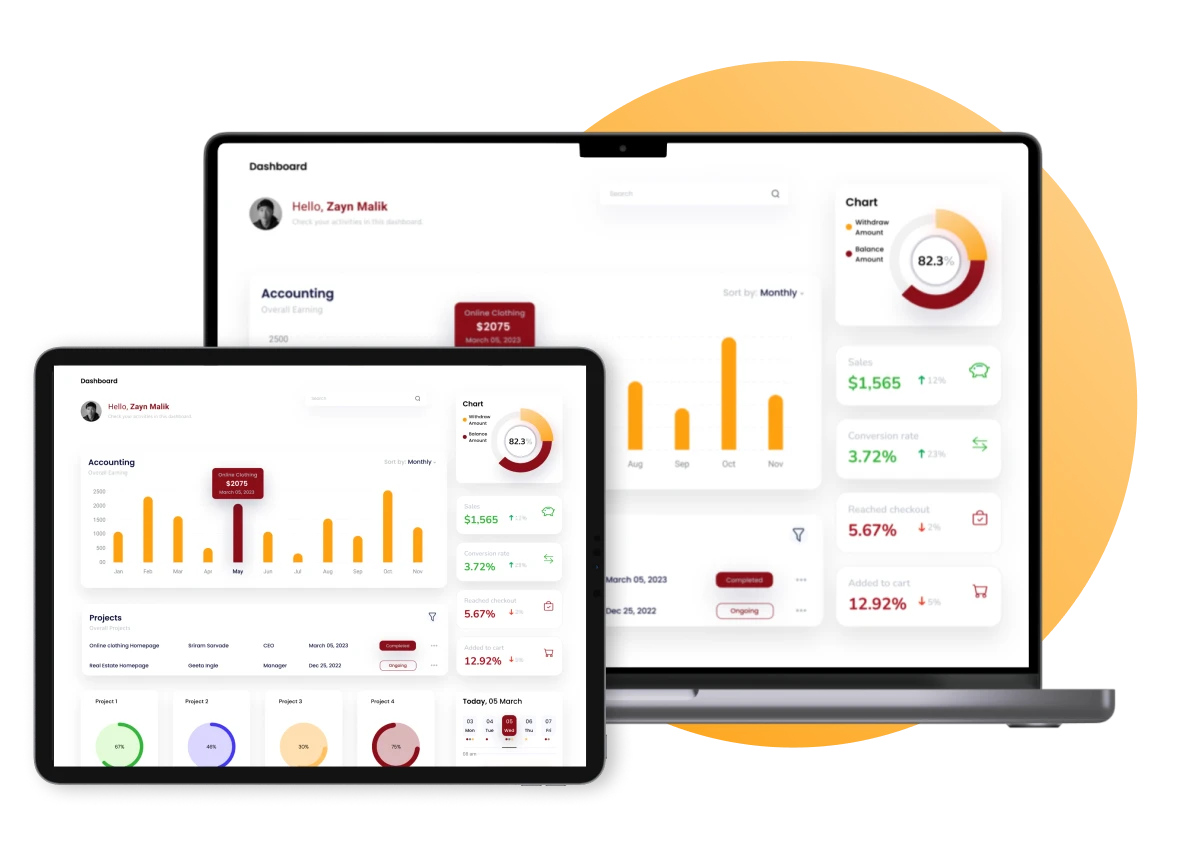Ever wonder how the giants of industry continue to expand, even in economic downturns? It’s not magic—it’s mastery of turnover! Turnover isn’t just another business term; it’s the pulse of your company, representing every peso earned before expenses.
Think of it as the scoreboard of your success, with higher numbers showing growth and stability. And with tools like marketing automation, boosting turnover has never been more achievable.
Imagine increasing your revenue without doubling your workload—this is what understanding turnover can do for you. Curious about how turnover impacts your growth and profitability? Let’s break down why it’s essential for your business.
Key Takeaways
|
Table of Contents
What is Business Turnover?
Business turnover is the total income a company earns from selling products or services. It reflects gross revenue, showing sales before subtracting costs like production or marketing expenses.
So, while turnover gives you a great snapshot of your business’s overall sales volume, it doesn’t reveal your profit. Turnover leaves out essential costs like production, wages, and operational expenses, which are all deducted later. In other words, it’s about how much your business generates, not how much it keeps.
Using an accounting tool can help bridge this gap, providing a detailed breakdown of both turnover and expenses to show not just how much your business generates but also how much it truly keeps.
How to Calculate Business Turnover
Calculating business turnover is straightforward but crucial for understanding your business’s revenue. Here’s the basic formula:
TURNOVER = NUMBER OF PRODUCTS SOLD × PRODUCT PRICE PER UNIT
This calculation gives you a quick snapshot of total income generated from sales over a given period, showing your business’s sales volume without deducting any expenses. Keep in mind that turnover only reflects the gross revenue, the amount before subtracting costs like production and other operating expenses.
To fully understand profitability, you’ll need additional calculations beyond turnover, such as analyzing expenses and net income. An accounting software Philippines can assist in tracking turnover and other essential metrics, providing a clear picture of revenue trends over time.
Differences Between Turnover and Profit
Profit and turnover are often confused but have distinct meanings.
| Name | Difference |
|---|---|
| Turnover | The total revenue a business earns from sales over a set period, excluding any expenses like production and operational costs—it reflects gross revenue. |
| Profit | The remaining income after deducting all necessary costs from turnover shows the company’s actual profitability. |
In summary, turnover represents the total sales, while profit is the remaining income after deducting production costs, operating expenses, and other costs. In other words, profit is the net income showcasing a company’s profitability after covering all expenses.

How to Increase Turnover
Boosting turnover isn’t just about selling more—it requires a thoughtful strategy to attract and retain customers effectively. Here are some proven ways to help businesses increase their turnover:
- Enhanced Promotions: Targeted, consistent promotions broaden reach and raise interest, boosting conversions and turnover.
- Product Quality Improvements: High-quality products justify higher prices and build loyalty, increasing both sales and revenue.
- Exceptional Customer Service: Excellent service enhances customer satisfaction and encourages repeat business, positively impacting turnover.
In summary, increasing turnover is about more than just sales numbers; it involves strengthening customer engagement and product value to sustain long-term revenue growth.
Benefits of Tracking Turnover in Business
Understanding and monitoring turnover helps businesses make informed financial decisions. Turnover provides insights into sales volume, customer demand, and cash flow trends, which are critical for budgeting and forecasting. Some benefits are:
- Enhanced Financial Planning: Turnover trends allow businesses to forecast revenue and budget better accordingly. Knowing sales patterns helps anticipate cash flow needs and manage expenses effectively.
- Improved Inventory Management: Monitoring high-turnover products ensures efficient stock management, reducing excess inventory and minimizing costs associated with unsold goods.
- Increased Profitability: By understanding which products or services generate the most revenue, businesses can prioritize profitable offerings and adjust strategies to maximize earnings.
- Optimized Customer Demand Response: Tracking turnover helps businesses respond to customer demand more effectively, allowing for timely adjustments in product offerings, promotions, and restocking efforts.
These benefits make turnover a vital metric for sustained financial health and business growth. Additionally, companies can manage inventory efficiently by tracking products with a faster turnover rate, ensuring fresh stock, and maintaining a stable cash flow.
Example: Calculating Turnover for a Shoe Company
Imagine a shoe company called “Dios” that manufactures and sells a popular sneaker. Dios produces 500 pairs of shoes each month, with each pair priced at $200. By selling all 500 pairs, Dios achieves a turnover, or total revenue, of $100,000 (500 pairs × $200).
However, turnover alone doesn’t show the profit, as it doesn’t account for expenses. Let’s look at Dios’s costs. Suppose the company’s monthly production costs, including materials, labor, and overhead, amount to $57,000. To find the profit, we subtract these production costs from the turnover:
Turnover: $100,000
Production Costs: $57,000
Profit Calculation: $100,000 – $57,000 = $43,000
This example illustrates how turnover impacts profit and how factors like pricing and production costs affect net income. Managing both sales volume and costs is essential to maximize profitability.
Manage Business Turnover with HashMicro’s Integrated Accounting Software
HashMicro’s Integrated Accounting Software simplifies turnover management by providing robust financial tools tailored to enhance business efficiency. Here are four standout features that make it easier for businesses to track turnover and manage finances effectively:
- Profit & Loss vs Budget & Forecast: This feature enables businesses to compare actual profit and loss with budget forecasts, giving clear insights into financial performance and helping to identify areas for improvement in turnover.
- Cashflow Reports: Accurate cash flow reports allow businesses to monitor income and expenses, ensuring a healthy cash flow that supports sustained turnover and financial stability.
- Bank Integrations – Auto Reconciliation: By integrating with banks for auto reconciliation, this feature saves time and ensures accurate financial records, which is crucial for clear turnover tracking.
- Automated Currency Update: With automatic currency updates, businesses dealing in multiple currencies can maintain accurate records and track turnover without the hassle of manual currency conversions.
With these features, HashMicro’s Integrated Accounting Software empowers businesses to monitor turnover, manage finances, and make informed decisions that drive growth and profitability.
Conclusion
Mastering business turnover is essential for any company aiming to drive growth and ensure stability. Tracking turnover provides key insights into sales trends and customer demand, offering valuable guidance for budgeting, inventory management, and financial planning.
By focusing on turnover, businesses can set clear goals that align with their growth ambitions and operational needs. For companies looking to manage turnover effectively, tools like HashMicro’s Accounting Software are invaluable.
This software not only simplifies turnover tracking but also provides advanced features like Profit & Loss vs Budget comparisons, cash flow reports, and automated bank reconciliation. Ready to ease the tension in your finance team? Try the free demo today and see the difference!

Frequently Asked Questions
-
How do you calculate business turnover?
Calculate business turnover by multiplying the number of products sold by the price per unit. This gives total revenue from sales before any expenses are subtracted.
-
What is turnover with an example?
Turnover is the total income from sales. For example, selling 500 items at $20 each results in a turnover of $10,000.
-
Is business turnover the same as revenue?
Yes, business turnover and revenue both refer to the total income from sales. They show gross earnings, not adjusted for expenses or costs.









































